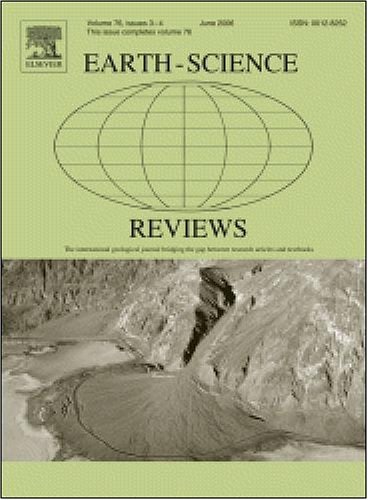Heat flow and thermal structure of the South China Sea
IF 10.8
1区 地球科学
Q1 GEOSCIENCES, MULTIDISCIPLINARY
引用次数: 0
Abstract
The South China Sea (SCS), the largest marginal sea in the western Pacific, is crucial for understanding geodynamic processes from continental breakup to seafloor spreading. The thermal state plays an important role in lithospheric deformation; however, that of the SCS remains poorly understood owing to poor data coverage and quality in early compilations. The incremental data accumulations over the decades enable an in-depth investigation of the thermal state of the SCS. A new compilation of 1338 heat flow data from the SCS indicates a high thermal condition with a mean of 75 mW/m2. The central oceanic basin is uniformly hot while continental margins show strong lateral variations due to various tectonic settings and shallow environmental factors. Sedimentation correction considering both heat generation and thermal blanket was applied; the suppression on seafloor heat flow by sedimentation is as significant as 20 %–40 % in the Qiongdongnan Basin. A broad high heat flow anomaly zone is confirmed, extending from the ocean-continent transition in the northeast to the Xisha Trough and the central depression of the Qiongdongnan Basin. The combination of post-rifting magmatism and hydrothermal circulation is thought to be responsible for it. The thermal lithospheric thickness of the SCS is estimated to be 50–80 km and the mantle contributes more than 65 % of the seafloor heat flow. This compilation offers unprecedented insights into the heat flow pattern depiction and interpretation for the SCS.
南海热流与热结构
南中国海是西太平洋最大的边缘海,对了解大陆分裂到海底扩张的地球动力学过程至关重要。热态在岩石圈变形中起重要作用;然而,由于早期汇编的数据覆盖范围和质量较差,对《国家标准说明》的了解仍然很少。几十年来的增量数据积累使得对南海热状态的深入研究成为可能。来自南海的1338个热流数据的新汇编表明,一个平均为75 mW/m2的高热条件。由于不同的构造背景和浅层环境因素,中央洋盆温度均匀,而大陆边缘则表现出强烈的横向变化。同时考虑产热和热毯的沉降校正;沉积对海底热流的抑制作用在琼东南盆地高达20% ~ 40%。确认了一条广泛的高热流异常带,从东北洋陆过渡延伸至西沙海槽和琼东南盆地中央坳陷。裂谷后岩浆活动与热液循环的共同作用被认为是其成因。据估计,南海热岩石圈厚度为50 ~ 80 km,地幔贡献了65%以上的海底热流。这一汇编提供了前所未有的见解,为南海热流模式的描述和解释。
本文章由计算机程序翻译,如有差异,请以英文原文为准。
求助全文
约1分钟内获得全文
求助全文
来源期刊

Earth-Science Reviews
地学-地球科学综合
CiteScore
21.70
自引率
5.80%
发文量
294
审稿时长
15.1 weeks
期刊介绍:
Covering a much wider field than the usual specialist journals, Earth Science Reviews publishes review articles dealing with all aspects of Earth Sciences, and is an important vehicle for allowing readers to see their particular interest related to the Earth Sciences as a whole.
 求助内容:
求助内容: 应助结果提醒方式:
应助结果提醒方式:


